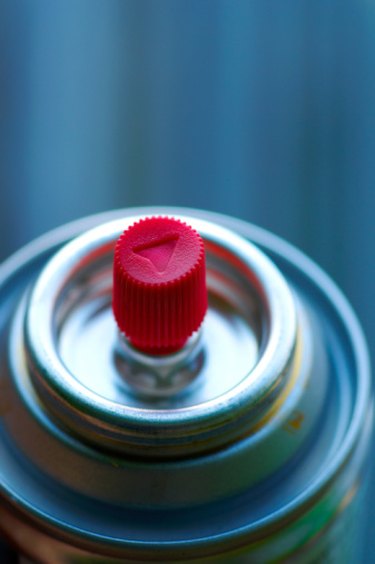Things You'll Need
Water-based degreasing cleanser
Coarse sponge
Shop rags
Towels
Professional painter's tape
Masking paper
Metal etching spray primer
Acrylic enamel

Bare, unfinished gas piping may stand out from other finished surfaces in a home. Help the piping blend in better by finishing it with paint. Consider an important point before you get started. Gas piping is made of durable, nonporous metal. This characteristic causes it to reject painted finishes unless it is pre-treated with acidic etching primer specifically manufactured for metal. Apply the base and finish in a specific manner to prevent unexpected sagging in the finish coat.
Step 1
Clean the gas piping with a degreasering cleanser, using a clean sponge. Rinse the piping with shop rags and dry it with towels.
Video of the Day
Step 2
Protect every area below and adjacent to the gas piping with masking paper, using professional painter's tape.
Step 3
Coat the gas piping with acidic metal etching spray primer. Hold an 8-inch space between the piping and primer spray nozzle at all times. Allow the piping to dry for at least three hours.
Step 4
Coat the gas piping with enamel. Hold an 8-inch space between the piping and enamel spray nozzle at all times. Allow the piping to dry for at least three hours.
Warning
Do not paint unprimed gas piping, or it will reject the enamel.
Unwashed gas piping may reject primer and paint.
Do not use ordinary base primers on gas piping, or the new finish will chip.
Hold an 8-inch space between the piping and spray nozzle at all times, or the final finish will sag.
Video of the Day